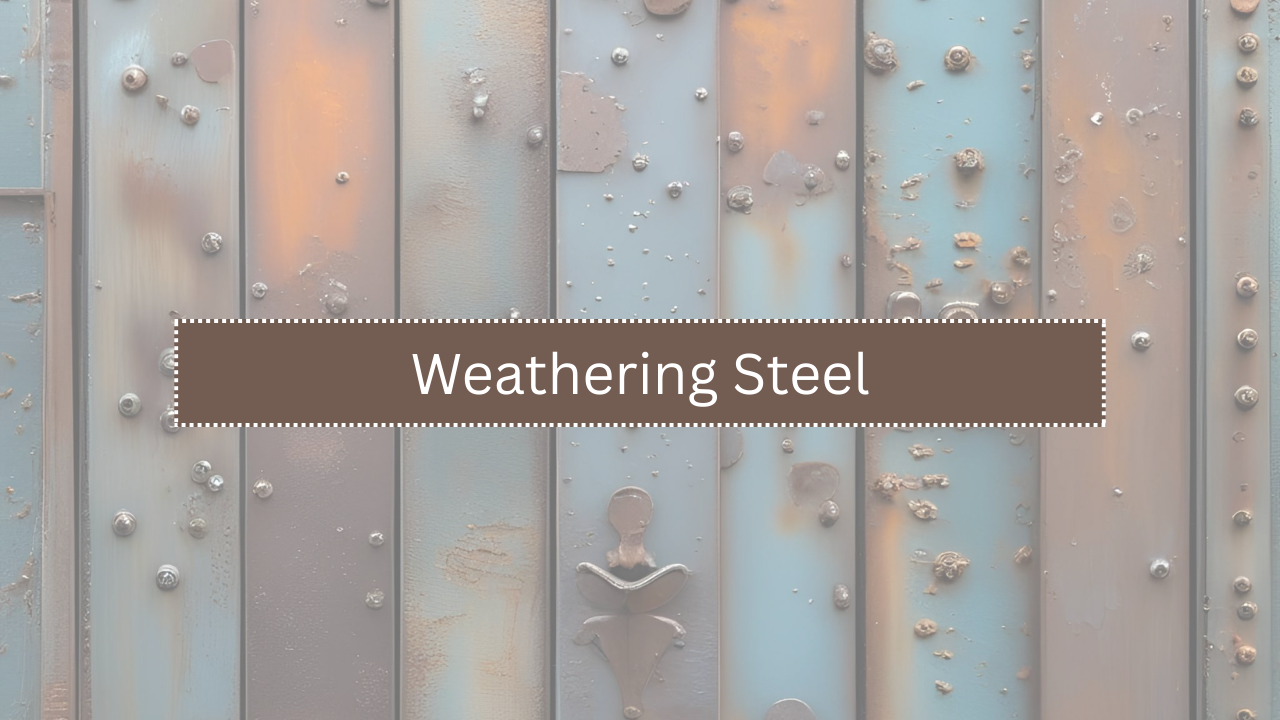Weathering steel, widely known by its trademark name Corten steel, is a type of alloy steel that is specially designed to eliminate the need for painting. Its unique ability to form a stable rust-like appearance when exposed to weather for a prolonged time makes it an ideal material for architectural and outdoor applications. It combines beauty, strength, and durability, making it a top choice for designers, builders, and engineers worldwide.
What is Weathering Steel?
Weathering steel is a group of steel alloys developed to form a protective coating of rust. This coating, known as patina, not only gives it a distinct orange-brown color but also shields it from further corrosion. Unlike regular steel, which continues to degrade over time, weathering steel resists atmospheric corrosion.
Types of Weathering Steel
There are two primary types of weathering steel: Corten A and Corten B, each used for different purposes.
| Type | Composition Features | Primary Use |
|---|---|---|
| Corten A | High phosphorus content | Architectural applications |
| Corten B | Higher strength with less phosphorus | Industrial structures like bridges |
Key Features of Weathering Steel
Weathering steel offers several advantages that make it suitable for outdoor structures and architectural designs.
- Natural Rust Finish: Forms a protective oxide layer without needing paint.
- Low Maintenance: Requires minimal upkeep over its lifespan.
- Durability: Resists harsh weather and external damage.
- Aesthetic Appeal: Offers a rustic and modern look.
- Eco-Friendly: Eliminates the need for chemical coatings or repainting.
- High Strength: Performs well under structural loads.
How Weathering Steel Works
When weathering steel is exposed to moisture and air, it reacts with oxygen to form a dense layer of rust. This initial oxidation acts as a barrier that prevents deeper corrosion, which is unlike ordinary steel that keeps rusting inward. The patina regenerates itself when scratched or damaged, ensuring long-term protection.
Ideal Applications of Weathering Steel
The versatility and strength of weathering steel make it an excellent choice across a wide range of uses.
| Application Area | Examples |
|---|---|
| Architecture | Facades, cladding, screens, roofing |
| Infrastructure | Bridges, railway cars, highway guardrails |
| Landscape Design | Sculptures, garden planters, retaining walls |
| Urban Furniture | Benches, bollards, bike racks |
| Signage | Outdoor directional or identity signs |
| Public Installations | Art pieces, memorials, park features |
Benefits in Architecture and Design
Weathering steel is widely appreciated by architects for its visual warmth and low maintenance. Some benefits include:
- Timeless Appearance: The weathered look blends with natural surroundings.
- Cost Efficiency: No painting required throughout the structure’s life.
- Design Flexibility: Can be cut, bent, or welded easily.
- Compatibility: Combines well with materials like wood, glass, and concrete.
Popular Architectural Projects Using Corten Steel
Some renowned structures have beautifully utilized weathering steel:
| Project Name | Location | Architectural Use |
|---|---|---|
| Barclays Center | New York, USA | Exterior cladding |
| Angel of the North | Gateshead, UK | Outdoor sculpture |
| Broadcasting Tower | Leeds, UK | Building façade |
| High Line Park | New York, USA | Landscape and structure elements |
| Australian War Memorial | Canberra, Australia | Monumental design |
Weathering Steel vs Regular Steel
Here’s a comparison to understand why weathering steel is preferred in many cases:
| Feature | Weathering Steel | Regular Steel |
|---|---|---|
| Corrosion Resistance | High (forms protective patina) | Low (requires constant maintenance) |
| Paint Requirement | Not needed | Essential for protection |
| Appearance Over Time | Rusty but stable look | Continues to degrade |
| Maintenance Cost | Very low | High due to repainting |
| Durability | Long-lasting | May weaken over time |
Installation and Considerations
Before using weathering steel in a project, a few points should be considered:
- Drainage: Ensure proper water runoff to avoid staining on adjacent surfaces.
- Initial Rust Runoff: The first few rainfalls may produce rust-colored water.
- Environment: Best suited for open-air conditions; not recommended for humid or marine climates.
- Welding and Fastening: Use compatible materials to avoid galvanic corrosion.
Weathering Steel in Outdoor Landscaping
Landscape architects often choose weathering steel due to its harmony with natural surroundings. From retaining walls and fencing to raised garden beds and fire pits, it adds character while withstanding weather changes.
| Landscape Feature | Reason for Using Corten Steel |
|---|---|
| Garden Edging | Clean lines and long-term durability |
| Retaining Walls | Structural strength with minimal upkeep |
| Sculptures and Art | Organic color that changes with weather |
| Water Features | Blends naturally with stone and greenery |
| Pathway Borders | Resistant to foot traffic and soil movement |
Environmental Impact
One of the lesser-known advantages of weathering steel is its sustainability:
- Energy Saving: No repeated paint or coating application needed.
- Recyclability: Fully recyclable at the end of its life cycle.
- Reduction of VOCs: No need for paint eliminates harmful volatile organic compounds.
Challenges and Limitations
While it is a superior material in many ways, weathering steel has some limitations:
- Not Suitable in Coastal Areas: Saltwater exposure can prevent protective patina formation.
- Surface Staining: Rust runoff can stain nearby concrete or stone.
- Upfront Cost: Higher initial material cost compared to regular steel (but offset by low maintenance).
Maintenance Tips
Although weathering steel is low-maintenance, a few simple practices can help enhance its performance:
- Keep surface free of debris to allow even weathering.
- Use sealers in areas where runoff might stain walls or pavements.
- Inspect fasteners and joints regularly to ensure structural integrity.
Closing Perspectives
Weathering steel, especially Corten, stands out as a reliable, beautiful, and environmentally conscious material for both architectural and outdoor use. Its ability to withstand time and weather with minimal care makes it a long-term investment for builders and designers. From bold facades to subtle garden accents, it offers both strength and character—qualities that few materials can match.

